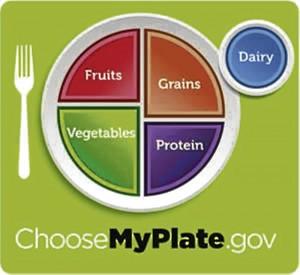 Health professionals are devising more ways to make it easier for people to adapt to healthy living. So if you are having doubts about making lifestyle changes because you assume that healthy living requires depriving yourself of delicious foods, counting calories, memorizing the food pyramid, or spending more time and money, now is the time to realize that living healthier is simple, cheap and yet satisfying.
Health professionals are devising more ways to make it easier for people to adapt to healthy living. So if you are having doubts about making lifestyle changes because you assume that healthy living requires depriving yourself of delicious foods, counting calories, memorizing the food pyramid, or spending more time and money, now is the time to realize that living healthier is simple, cheap and yet satisfying.
No busting the budget
When you eat healthy you spend less time, effort and money because you save more calories when you prepare your foods and bring meals and simple healthy snacks wherever you go.
There are specialty stores selling expensive and imported “healthy” snacks, but you don’t need to buy these to be a healthy eater. These expensive foods sometimes contain even more calories than a piece of bread with tuna and cheese.
You can always go to the grocery store or market, get the freshest fruits, vegetables, poultry and seafood, and create your own recipe by checking cookbooks or healthy recipe websites. Healthy eating requires less preparation, cooking time and ingredients. It is as simple and fast as boiling, roasting, grilling, steaming veggies, chicken or fish in less than 10 minutes.
No self-deprivation
When you wake up, eat to break the food fast since your last meal the previous night. This is why it’s called breakfast. Most dieters believe that skipping breakfast helps them save calories. But numerous studies have shown the good effect of regular breakfast on long-term effective weight control. 
According to Enette Larson-Meyer, PhD, RD, FACSM, nutrition professor at the University of Wyoming, you can aim for a breakfast that provides 25 to 30 percent of the calories for the day, which is equivalent to 600 calories if you are a highly active female consuming 2,500 calories per day.
This also implies that the path to healthy eating requires one to have sufficient food intake a few minutes after waking up, to avoid over-eating and uncontrolled cravings during the latter part of the day. Not having any appetite in the morning doesn’t mean you shouldn’t eat.
Choose a complete combination of breakfast foods like fiber carbohydrates from whole grain breads, fruits and/or vegetables, protein from milk, yogurt, fish or egg. This breakfast combination will help you last another three to four hours before your next meal, either as light morning snack or full meal lunch.
No calorie-counting
The moment you decide to eat healthy and manage your weight, you don’t really have to focus on counting calories to make the program work for you. You just need to start by gradually reducing foods that cause your health and weight problems like your usual desserts, junk food snacks and processed breakfast foods, and replacing them with healthier choices.
Avoid foods that have been proven to cause short- and long-term weight gain, and stick to ideal foods associated with effective weight control.
A recent study on changes in diet and lifestyle and long-term weight gain in women and men published in The New England Journal of Medicine shows that the dietary factors with the largest associations in weight changes were increases in the consumption of potato chips, potatoes (french fries and mashed potatoes), sugar-sweetened beverages, unprocessed red meats and processed meats, refined grains, sweets and desserts.
Increased consumption of vegetables, whole grains, fruits, nuts, and yogurt resulted in an inverse association with weight gain.
 A meal that consists of french fries, deep-fried breaded chicken with skin, rice, an upsize glass of soda and sundae dessert can have two to three times as many calories as a grilled chicken fillet meal with steamed mixed greens, brown rice and fresh fruit platter. So when you choose something a bit similar to the grilled chicken meal, at least you are aware how huge the calorie savings will be.
A meal that consists of french fries, deep-fried breaded chicken with skin, rice, an upsize glass of soda and sundae dessert can have two to three times as many calories as a grilled chicken fillet meal with steamed mixed greens, brown rice and fresh fruit platter. So when you choose something a bit similar to the grilled chicken meal, at least you are aware how huge the calorie savings will be.
No need to memorize the food pyramid
The United States Department of Agriculture (USDA) created the “My Plate” diagram to accompany the dietary guidelines they just released early this year, and also as part of its campaign against obesity. This will replace the food pyramid, with the objective of communicating healthy eating in a much simpler way.
The quadrant consists of vegetables, fruits, protein and grains, and next to the plate is a blue circle for dairy, which could be a glass of milk, cheese or yogurt. The “My Plate” encourages one to fill half of the plate with fruits and veggies, to make half of the grains as whole grains, to switch to fat-free or low-fat milk, to lessen sodium consumption, and to drink water instead of sugary drinks.
Visualizing a plate containing the right amount and ratio of nutrients seems more doable and simpler to remember when eating one’s meal. Of course, the total amount of calories per meal is still based on your activity level, goals, gender, health condition and weight. You can check the website, www.ChooseMyPlate.gov to know more about the specific guidelines.
E-mail the author at [email protected].














































